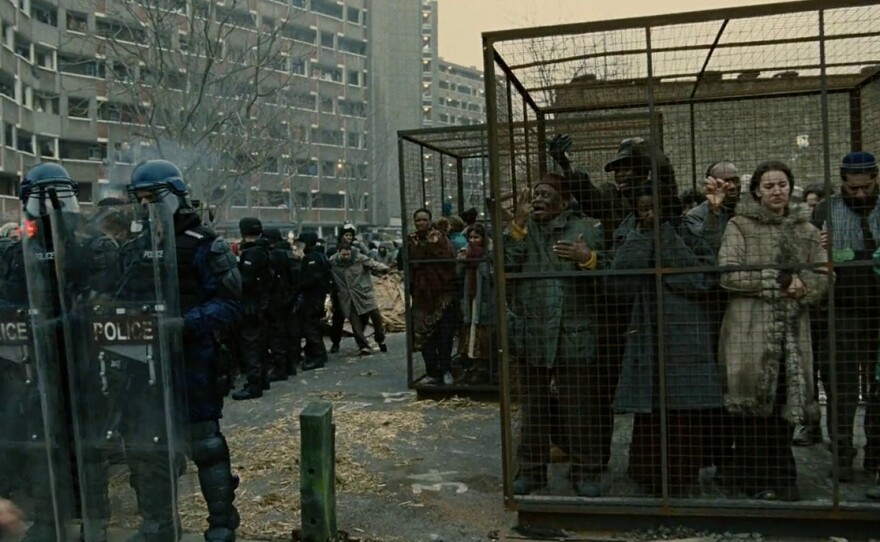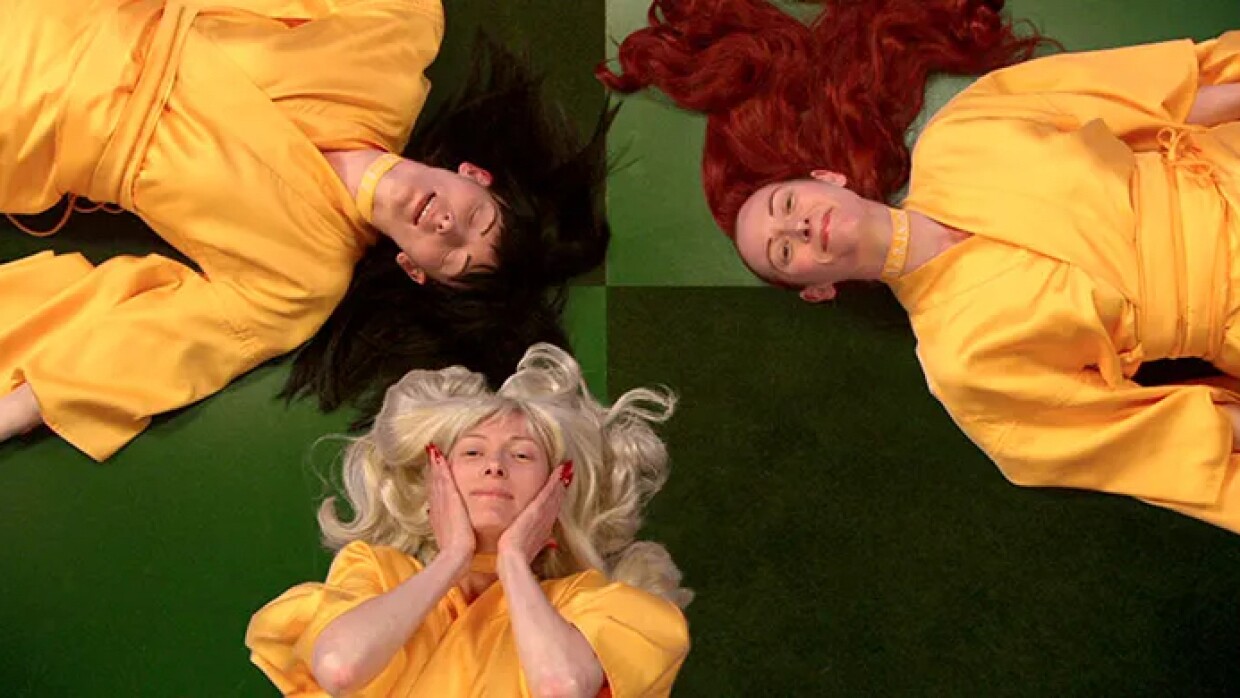Science on Screen Film Series
All films 7:00 p.m. at Digital Gym Cinema
This presentation is part of Dissecting Visions of Identity and Care in the Future, a four-part film series made possible by the Sloan Foundation’s Science on Screen initiative. Each film will be paired with a guest speaker.
May 9: "Children of Men" (May 9)
May 16: "Teknolust"
May 23: "Coded Bias"
May 30: "Safe"
Digital Gym Cinema kicks off a film series this week called Science on Screen. The first film is Alfonso Cuaron's "Children of Men." The series is part of Dissecting Visions of Identity and Care in the Future. Each film will be paired with a guest speaker.
Science on Screen uses cinematic futures to explore a current range of issues from race to artificial intelligence.

'Children of Men'
Refugee studies researcher Şevin Sağnıç will be the guest speaker presenting "Children of Men" on May 9.
"When I first watched the movie years ago, it was just a futuristic science fiction movie," Sağnıç said. "Now that I watch it as a person who studies refugee migration, it is even more amazing. But it is not futuristic or science fiction anymore. Even though it is set in a dystopian future, it is pretty much reality for millions of people today and I'm really interested in discussing this with the audience."
Sağnıç studies international migration with a focus on refugee migration as well as gender and how women and people of color are ignored in migration data.
One thing that struck her about the film was the normalized violence depicted in the background.
"You see people in the cages, in the metro stations, in the train stations, and it is such a normal thing. People just walk around," Sağnıç said. "This was something that was very dystopic, or maybe something of a past for us, but today it's happening in our most liberal modern societies, to children, to people of color, to undocumented migrants, to refugees. So it was something of science fiction but it is the reality now. And when you look at those refugee camps, the refugee camp in the movie, how crowded it is, how inhumane the conditions are, and how people are actually left to take care of themselves, it is unfortunate that that's the reality for millions of people today."
But the film is not without hope and the storytelling of the film can make audiences empathize more with the people it depicts.
"It make us empathize more and maybe look deep down in ourselves to understand what brings hope to us," Sağnıç added. "It is one of the main questions that the movie is dealing with. There is all this despair and hopelessness, and within that violence and the horrible conditions that they are subject to, they are trying to find meaning to what's going on and find the meaning so that they would have a hope for future. And very cleverly, the boat that they are on is named Tomorrow. So what brings hope, what brings a hopeful tomorrow for us is the question that I really want to discuss with the audience."
'Teknolust'
Next week’s "Teknolust" stars Tilda Swinton as scientist Rosetta Stone, who creates three Self-Replicating Automatons, which she clones from her own DNA. But in order to survive, they need the male Y chromosome found in sperm and shenanigans ensue. The theme proposed by the series is: "Personal Encryptions: Performing Identity and Sexuality IRL in URL (Exploring how the anonymity of web spaces allow individuals to express gender, sexuality, race, and desires more openly."
And that thoroughly intrigued guest speaker Max Schaffer. They are in UCSD’s integrative studies program where they combine music technology and gender research. They saw the film as ahead of the curve when it came out in 2002.
"Maybe parts of it have this kind of hilarious 2000s hacker aesthetic," Schaffer said. "Like parts of it feel ridiculous, but it's also kind of on the nose to the questions that are going on now around anywhere from AI conversations all the way to genetic engineering questions around CRISPR. So it feels a little bit like a hacker movie or post-'Matrix' movie. And it does so in that sort of artsy but low-budget look. But at the same time it's presenting pretty serious questions around these concepts like: Can you patent life? Can you patent a genome, which people are still trying to actually figure out if you can do? Can you have sort of these birthed children by accident out of sort of AI technologies, out of genome technologies that maybe achieve a level of humanity that makes you kind of wonder if you're even allowed to parent it or allowed to control it."
Schaffer, who will be speaking at the film through one of their online avatars, also sees the idea of anonymity coming up in the film.
"It gets into anonymity in an interesting way," Schaffer said. "In the sense that the characters are almost anonymous because they're multi-bodied, if that makes sense. It's not like they're all going out wearing a mask. It's not like they're like a digital avatar. They're sort of nameless, but they all are kind of clones. And so I think it's kind of an interesting thing to consider, especially through the context of what I do, which is a lot of appearing in different places, as different bodies, as different people. What does it mean to have that sort of flexibility to maybe investigate the self? Can you have a bunch of different ways of existing at once without them having to be different characters? Can they all be kind of contained in one being but exist in the world all at once? Kind of like these clones, which I think a lot of us have have gotten used to in many ways, especially with digital forms, but even prior to that just from our ability to code switch or move between communities or anything."

As someone who works in gender studies, Schaffer was also interested in the gender fluidity of the enigmatic Swinton within the realm of the film.
"Fluidity is an interesting concept in the movie because at the same time that there's like a lot of fluid movement in sexuality, there's also a very clear sort of biology-driven, hetero timeline that goes on," Schaffer said. "All the characters find some man out in the world to be with and they need the biological matter to sustain themselves. So on one hand, there's this very kind of rigid, almost biological look at it. But on the other, there's this contending view that Tilda Swinton's character or one of her four characters being able to asexually reproduce essentially and have three children completely on her own."
Schaffer added that the film suggests, "every person deserves an ability to sort of curate themselves. They deserve their own face, they deserve their own things. It's showing all these different ways that you can exist and find a way to thrive in various ways, but it's also commenting on maybe the fact that with the development of tons of new medical technology, maybe there's actually more ways to go about it than we even knew. And it's okay to dream really big. When I went on Estrogen, I had to go put my sperm in a freezer bank if I wanted to keep it. And I remember just kind of thinking, I wonder in 20 years what I could do with that. But maybe you watch a movie like this and maybe there is something really weird I could do with that in the future.'
Those are the kinds of ideas and questions that will be discussed every Tuesday in May for Science on Screen at Digital Gym Cinema in East Village.






